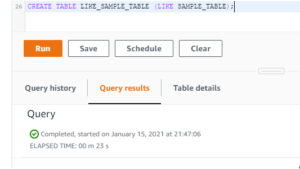

They're comparable to Totals and Reference Lines.ĮXCLUDE can't be used in row-level expressions (where there are no dimensions to omit). They can modify a view-level calculation or other LODs. Now you can see how the average sum of sales per state varies across categories and segments.ĮXCLUDE level of detail expressions declare dimensions to omit from the view level of detail.ĮXCLUDE is useful for 'percent of total' or 'difference from overall average' scenarios. When Segment is added to the Columns shelf and the calculation is moved to Label, the LOD expression results update. The resulting visualization averages the sum of sales by state across categories. The calculation is placed on the Rows shelf and is aggregated as an average. This INCLUDE level of detail expression calculates sum of sales on a per-state basis: With the LOD on the Rows shelf, aggregated as AVG, and on the Columns shelf, the view shows the average customer sales amount per region:

For example, changing the data type of a column that is part of the sharding key would lead to a redistribution of data.
#REDSHIFT ALTER TABLE COLUMN TYPE HOW TO#
How to create LOD expressionsįollow along with the steps to learn how to create and use an LOD expression in Tableau. ALTER TABLE products MODIFY COLUMN productid int, MODIFY COLUMN supplier VARCHAR (4) Note that changing data type has implications on the primary key and sharding enforcement. This article explains the types of LOD expressions you can use in Tableau, when to use them, and how to format them. They can be performed at a more granular level (INCLUDE), a less granular level (EXCLUDE), or an entirely independent level (FIXED). However, LOD expressions let you control the granularity you want to compute. But if you are certain, then do create it so the database engine can use it when executing your queries.Level of Detail expressions (also known as LOD expressions) allow you to compute values at the data source level and the visualization level. For example, if you are not sure if the product name is really unique for a table, do not create the unique key constraint for it. However, you should not define them if you doubt their validity. It is recommended to use them if your data loading process ensures their integrity, as they are used as planning hints to optimize query execution. However, the same documentation states that these are informational only and are not enforced. Redshift does support creation of unique, primary key and foreign key indexes (referred to in the Redshift Documentation as constraints). Add primary key to a table ALTER TABLE table1 ADD PRIMARY KEY (col1) - It is recommended to specify a constraint name using the CONSTRAINT keyword - Here we also show you can have more than one column in the constraint definition ALTER TABLE table2 ADD CONSTRAINT table2pk PRIMARY KEY (col1, col2) - Add a unique key ALTER TABLE table. However, if you specify compression encoding for any column in the table, the table is no longer set to ENCODE AUTO. For more information, see CREATE TABLE and ALTER TABLE. Answer (1 of 2): This is the command: codeALTER TABLE tablename ALTER COLUMN columnname TYPE newdatatype /codeThe problem is that there are a number of restrictions on what can be changed from and changed to. Instead, you choose distribution styles and sort keys when you follow recommended practices in How to Use DISTKEY, SORTKEY and Define Column Compression Encoding in Redshift. When a table is set to ENCODE AUTO, Amazon Redshift automatically manages compression encoding for all columns in the table. It does not support regular indexes usually used in other databases to make queries perform better. Being a columnar database specifically made for data warehousing, Redshift has a different treatment when it comes to indexes.


 0 kommentar(er)
0 kommentar(er)
